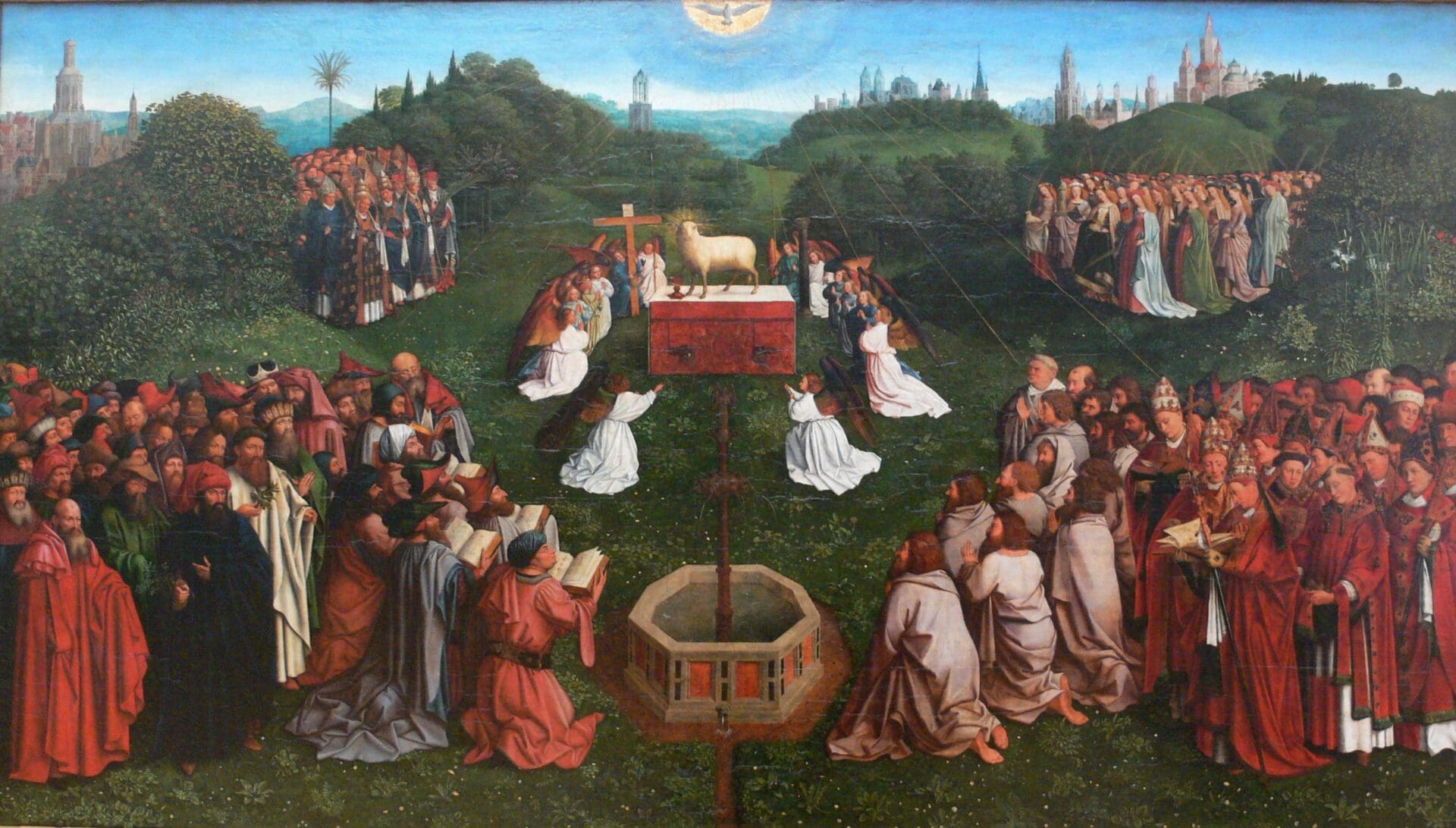In perhaps one of his most memorable lines to date, the Holy Father encouraged pastors to “smell like their sheep.” But what does a sheep smell like? Jesus was called the “Lamb of God” by John the Baptist. Long before Jesus, and by way of foreshadowing his coming, Abel offered a lamb; the life of Isaac was rescued by a ram; the firstborn of the Chosen People were ransomed by a lamb.
Would it make any difference to faith whether one had ever seen (or smelled) a lamb up close? Would liturgical participation in the Mass—also known as the “wedding feast of the Lamb” (Rev. 19:9)—be changed with a greater familiarity with these creatures?
Lambs, it must be said, are not the only creatures of nature that have some bearing on the life of faith. As the Catechism says, “God speaks to man through the visible creation. The material cosmos is so presented to man’s intelligence that he can read there traces of its Creator. Light and darkness, wind and fire, water and earth, the tree and its fruit speak of God and symbolize both his greatness and his nearness. Inasmuch as they are creatures, these perceptible realities can become means of expressing the action of God who sanctifies men, and the action of men who offer worship to God” (nn.1147-8).
The Church’s liturgy recognizes creation’s role in worship, how nature speaks of God and, with us, to God. The liturgical hymn Te Deum, for example, sung at the conclusion of the Office of Readings on Sundays, Solemnities, and Feasts, begins, “You are God: we praise you; you are the Lord: we acclaim you; you are the eternal Father: all creation worships you.” Similarly, the Canticle of Daniel sung at Morning Prayer on Sundays (weeks I and III, especially), commands all of creation— sun and moon, stars of heaven, shower and dew, ice and snow, birds of the air, beasts wild and tame—to bless the Lord.
In her sacraments, the Church likewise recognizes the natural basis of her supernatural actions. Long before water does its supernatural duty in baptism, it has natural reality and purpose, cleansing and giving natural life, for example. So, too, with many other elements. Again, from the Catechism: “The sacraments of the Church do not abolish but purify and integrate all the richness of the signs and symbols of the cosmos…” (n.1152).
There exists, then, a legitimate liturgical concern about nature and creation, for upon these foundations are built the supernatural realities of the new creation in Christ. As liturgical scholar Aidan Kavanagh once quipped, the baptismal font “contains what is called ‘living water’ not because things grow in it but because it moves to give life to those who lie in death’s bonds.”
With these reflections in mind, brought to the fore by the Holy Father’s encyclical Laudato Si and the recent “World Day of Prayer for the Care of Creation,” another appropriate and oftcited piece (at least in liturgical circles) deserves revisiting. Virgil Michel, pioneer of the liturgical movement in the United States, was the founder of the liturgical periodical Orate Fratres in 1926 (the same publication exists today under the title of Worship). It is noteworthy, too, that he and other liturgical figures of the last century were also interested in rural, “natural” living: Virgil Michel was a great supporter of the National Rural Life Conference which began in 1923. (Another proponent of life—Father Paul Marx, OSB, founder of Human Life International and fellow Collegeville Benedictine—wrote the biography of Virgil Michel in 1957).
In 1938, Father Michel penned the following piece, “City of Farm” (excerpts here) not only for its own relevance to the life of grace generally, but as a topic supremely relevant to the celebration of and participation in the Church’s sacred liturgy. Even though Father Michel will, as you will read, answer for the farm, it must be acknowledged at the same time that the city is also a key locus for the Christian faith. It is toward the heavenly city of Jerusalem that we journey (Rev. 21:2). Also, while Vigil Michel’s American city of 1938 has many similarities to the city of 2015, it was, admittedly, a city at the end of the Great Depression. Still, even if historically Christianity flourished first in the cities, Christian liturgy “is rooted” (CCC, n.1145) in the rural areas: grace builds upon nature, where cult and agriculture share the same soil.
Do not some of Dom Virgil’s (and Pope Francis’s) reflections on nature have some significance to our liturgical understanding today?

